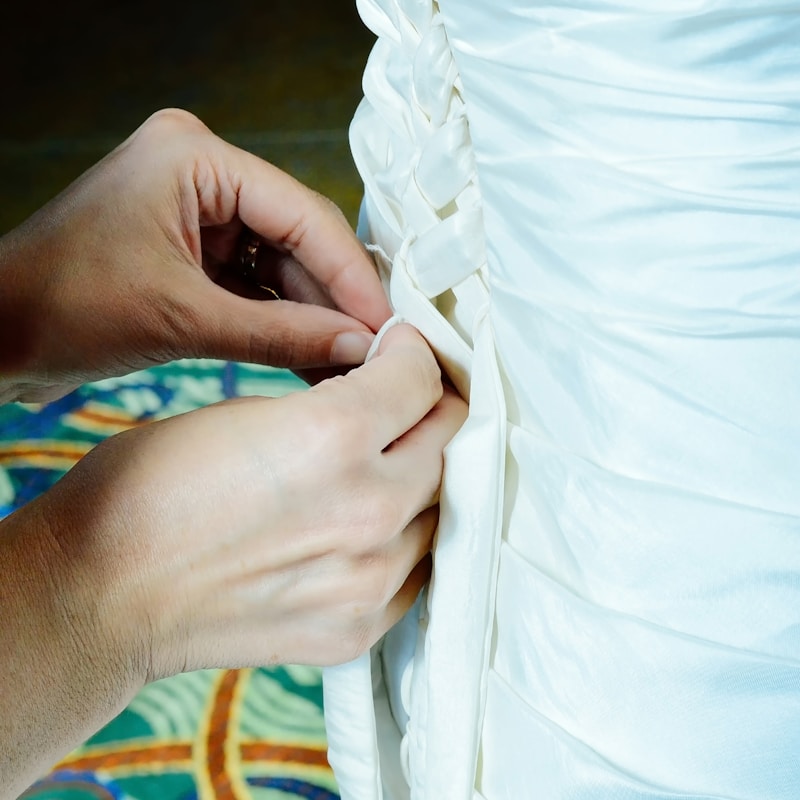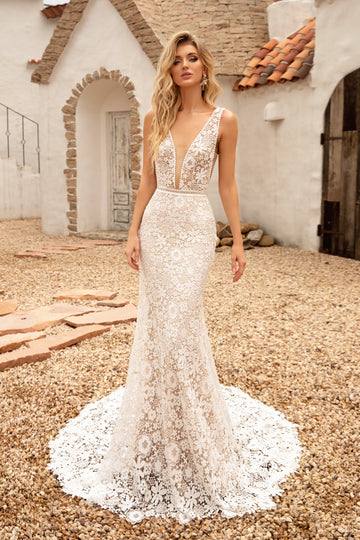Unlocking Elegance: Mixing Textures in Bridal Attire
Unlocking Elegance: Mixing Textures in Bridal Attire
In the world of bridal fashion, the quest for uniqueness and personalization is ever-evolving. One of the most exciting trends emerging in recent years is the art of mixing textures in bridal attire. This not only enhances the overall look but also adds depth and dimension to the wedding day ensemble. In this article, we will explore various aspects of mixing textures, practical tips for brides-to-be, and how this styling technique can elevate your bridal look to new heights.
Understanding the Concept of Texture in Bridal Wear
Texture is defined as the feel, appearance, or consistency of a surface or a substance. In bridal wear, it usually refers to the fabric quality and surface design elements used in a wedding gown or attire. Common fabrics include:
| Fabric Type | Description |
| Silk | Known for its luxurious feel and sheen, silk drapes beautifully. |
| Lace | A delicate fabric that adds an intricate and romantic touch. |
| Tulle | A lightweight and airy fabric often used for veils and overlays. |
| Chiffon | Soft and flowy, perfect for creating ethereal silhouettes. |
| Velvet | A rich, plush fabric that adds a vintage vibe. |
Mixing these textures can create a visually appealing bridal look that stands out. By carefully combining fabrics, brides can showcase their personality, style, and even the wedding theme itself.
The Benefits of Mixing Textures
When it comes to mixing textures, the benefits are plentiful. Here are a few reasons why considering this trend is valuable for brides:
- Visual Interest: Juxtaposing different textures can create a captivating visual experience. Think layers of lace over soft silk or a tulle skirt paired with a satin bodice.
- Personal Expression: Every bride is unique, and combining various textiles allows for a more personal touch in design.
- Enhanced Dynamics: Different textures can evoke specific emotions, adding richness to the overall aesthetic.
- Modern Appeal: A traditional wedding gown can be transformed into a contemporary masterpiece with the right mix of materials.
Tips for Successfully Mixing Textures
While mixing textures can seem daunting, it can be achieved successfully with a few tips:
1. Choose a Color Palette
Having a cohesive color palette is essential when mixing textures. Selecting complementary colors allows each fabric to shine while maintaining uniformity in style.
2. Play with Proportions
Consider the proportions of each texture. For example, a voluminous lace skirt can be balanced with a fitted satin bodice. This creates a visually stunning contrast that remains elegant.
3. Combine Different Fabric Weights
Mixing fabrics of varying weights can enhance depth. For instance, pairing a heavy velvet with lightweight chiffon can add drama and sophistication to the outfit.
4. Integrate Patterns Wisely
If you're considering adding patterns to your bridal attire, ensure they complement rather than conflict with the textures. Floral lace over a solid colored fabric can create an enchanting look.

Popular Combinations of Textures for Bridal Attire
The possibilities for mixing textures in bridal attire are infinite. Here are some of the most popular combinations that brides are gravitating towards:
- Lace and Satin: A classic combination that exudes romance and elegance.
- Tulle and Velvet: Perfect for a modern bridal look with a vintage touch.
- Chiffon and Organza: Lightweight layers that create a magical, ethereal feel.
- Denim and Tulle: For the daring bride looking to break tradition with a fun and relaxed vibe.
Accessorizing with Texture
To further enhance the look, don’t overlook the power of accessories. Consider incorporating textured elements into your bridal accessories:
- Textured Veils: A lace or tulle veil can add an extra layer of texture without overwhelming the main attire.
- Statement Jewelry: Ornate jewelry with different finishes can create additional points of interest.
- Intricate Shoes: Choose shoes that have unique textures, such as suede or embellished materials.
Real Brides Who Mastered the Art of Mixing Textures
To illustrate just how impactful mixed textures can be, let’s look at a few real-life examples of brides who embraced this trend:
Bridal Style #1: Jane wore a stunning satin mermaid gown layered with intricate lace. Her look was topped off with a delicate tulle veil, perfectly showcasing the blend of textures.
Bridal Style #2: Emily opted for a whimsical approach by pairing a floral lace bodice with a flowy chiffon skirt. This combination allowed her personality to shine while maintaining classic elegance.
Final Thoughts on Mixing Textures in Bridal Attire
Mixing textures in bridal attire is not just a trend; it is an avenue for personal expression and style. With careful consideration of fabrics, colors, and proportions, brides can create a look that is distinctly their own. As you prepare for your big day, remember to embrace creativity and have fun with the mixing of textures!
When exploring this trend, keep in mind the importance of balance and cohesion in your overall look. Don't hesitate to consult a professional for tailored advice or inspiration. Choosing the right combination of fabrics can lead to a breathtaking bridal appearance that captures the essence of your special day.
In conclusion, as you embark on your journey to find the perfect wedding attire, think beyond the traditional. Mixing textures is a sophisticated way to craft a unique bridal look that truly reflects who you are—because your wedding day is a celebration of your love story, and it deserves to be as extraordinary as you are.
